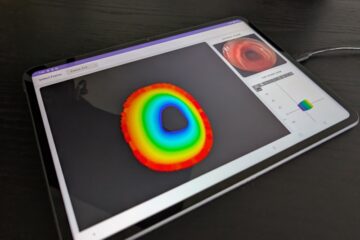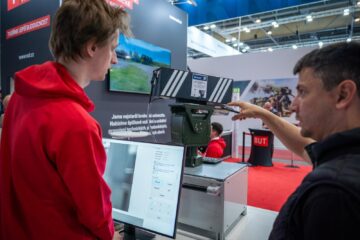As part of one of our earlier projects, we needed to verify the capabilities of modern low-light cameras that can operate even at nearly zero illumination without using any additional lighting. We selected the See3CAM_CU27 camera with the Sony STARVIS IMX462 sensor as a representative of this category, as it is specifically designed for low-light conditions. However, there are several other similar cameras available on the market. For comparison, we also included the more common See3CAM_CU135 camera with higher resolution in our test.
This was not a sophisticated experiment; the goal was simply to practically verify what kind of images can be obtained from these cameras under poor lighting conditions. Moreover, it is likely that the latest sensors push these capabilities even further. During the experiments, we placed the camera on a tripod and recorded several videos, from which we present only sample frames below.
Camera See3CAM_CU27
- Plné rozlišení: Full HD (1080p)
- Senzor: Sony STARVIS IMX462, což zajišťuje velmi vysokou citlivost na světlo, i při 0 lux
- Rozhraní: USB 3.1 Gen 1, kompatibilní i se staršími USB 2.0 porty
- Výstupní formáty videa: MJPEG při FHD až 100 fps, UYVY při FHD 60 fps
- Objektiv: pevná ostrost + držák pro M12 objektivy
- ISP (Image Signal Processor) na desce: automatické vyvážení bílé (AWB) a expozice (AE)
- Vhodná použití: noční vidění, inteligentní dohled, detekce chodců, mikroskopy (např. medicínské)
- Rozměry a spotřeba: provozní napětí 5 V, malé rozměry
Camera See3CAM_CU135
- Rozlišení: 13 MP, umožňuje 4K video.
- Senzor: onsemi® AR1335 CMOS s BSI technologií (1,1 µm pixely)
- Objektiv: pevná ostrost + M12 (S-mount), možnost volby vlastní čočky podle potřeby
- ISP na desce: zpracování obrazu, automatické funkce (AWB, AE) pro co nejlepší obraz.
- Výstupní formáty: nekomprimovaný UYVY i komprimovaný MJPEG
- Rychlost snímání: například Full HD @ 60 fps a 4K @ 30 fps
- Kompatibilita OS: funguje s Windows, Linux, Android a macOS (UVC)
- Rozměry a spotřeba: 5 V napájení, malé rozměry
The exposure time is determined by the selected FPS setting.
Experiment 1
Reference photos

Main lens of the Samsung S20

Wide-angle lens of the Samsung S20
Camera CU27

30 FPS, default gain

8 FPS, highest gain
At 8 FPS, the camera is able to capture a person even with significant noise, while avoiding overexposure in this scene.
Experiment 2

Main lens of the Samsung S20

Wide-angle lens of the Samsung S20
Camera CU27

30 FPS, default gain

8 FPS, highest gain
In this scenario, the camera is pointed toward areas with very low lighting (practically in darkness). At 8 FPS and maximum gain, it is able to capture the basic outline of a person.
Experiment 3

Main lens of the Samsung S20
Camera CU27

8 FPS, highest gain
In this case, we used a lamp to simulate bright areas. The images then show overexposed regions caused by high exposure and gain.gain).
Camera CU135

1 FPS, highest gain
In our experiments, the See3CAM_CU27 camera served as a representative of cameras designed for the visible spectrum that are also capable of providing useful information under very low-light conditions. The results of these simple experiments confirm that these types of cameras are particularly useful in scenarios where:
- it is not possible to use additional lighting,
- there is a need to capture a person or object at night,
- the key requirement is the ability to "see in the dark," rather than high resolution.
The manufacturer also publishes standardized sensitivity measurements under controlled lighting conditions, which complement our real-world experiments (https://www.e-consystems.com/usb-cameras/sony-starvis-imx462-ultra-low-light-camera.asp).


